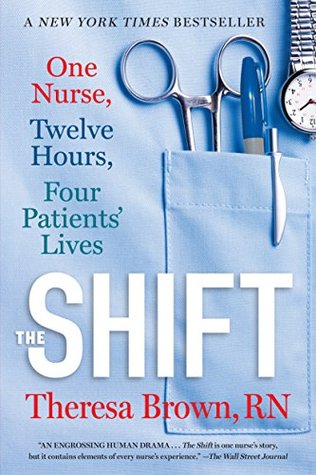More on this book
Community
Kindle Notes & Highlights
Read between
December 16 - December 29, 2018
There will come a time when each of us will need a clean, well-lighted place that stays open all day and night, offering shelter from life’s storms. This is a hospital.
Sophia Robertson liked this
a forty-five-year-old mother of three with a PhD in English working as a nurse.
nurse-to-patient ratios aren’t just about patients feeling cared for; they’re also about fragile people staying alive.
Sophia Robertson liked this
Treatment for cancer is not like having your gallbladder removed; some patients want to know
Hierarchies in naming reinforce hierarchies of power and I guess that explains the rigidity about who’s called what in hospitals, but health care might run more smoothly if those of us who work together used first names, identifying ourselves to each other at least as more equal than not.
Before Candace, though, I need to finish my notes on Sheila, particularly since my morning assessment was wrong in crucial ways. I put in a note about her perf, including when and how I found out about it. Then I go to a different screen and I pull up the spreadsheet where we document our daily clinical observations. Bowel sounds? I didn’t hear them, but didn’t think that silence through. The documentation seems pointless in light of what her real problem is. Neither I nor the medical staff nor the nurses and doctors in the emergency department, paid the right kind of attention to what was
happening in Sheila’s bowel, but our mistaken observations have to be checked off on multiple drop-down menus so that the record is complete. I do understand why such thoroughness matters legally, but I sometimes wonder if sadists designed our software. It should not be easier to order a sweater from Lands End than to chart on my patients, but it is.
Click, scroll, type, enter. Here’s the menu with twenty choices, none of them the one I need. Here’s the point where I need information from two different screens, but there’s no way to toggle between them. Here’s the screen with thirty discrete options to check, but the window it opens up only shows me five at a time. New lab results, X-rays, CT scans, MRIs: none of those generate an alert and the screen is full of minute icons, some of which represent functions I don’t use or even understand. Finally I finish up Sheila’s asses...
This highlight has been truncated due to consecutive passage length restrictions.
Mr. Hampton’s weakness, his difficulty breathing,
confusion are all on my mind. Will we save him or push him closer to death? You can only know what you know, a wise friend told me, but so much is on the line here in the hospital I sometimes want to know more than I can.
Nurses and doctors—our work is often invisible to each other.
makes sense that if you crossed the heedlessness of a firefighter with the anarchism of a punk rocker the result would be a person acutely aware of life’s randomness.
Abraham Verghese, the physician and writer, speaks
eloquently about the value of touch in health care. During a lecture here in Pittsburgh he explained that when doctors examine patients by physically touching them the patients feel more thoroughly cared for than if they had only been asked questions and observed. That reaction makes sense since when we’re ill it’s usually our bodies that are sick and hold the details of our affliction; a doctor intuitive enough to diagnose from touch is not just appealing, but reassuring. Nurses touch patients all the


